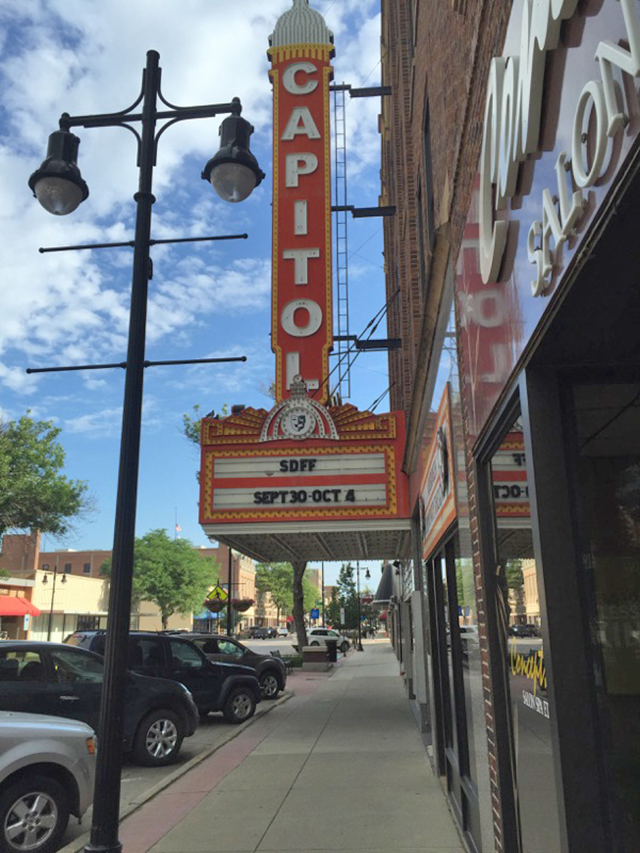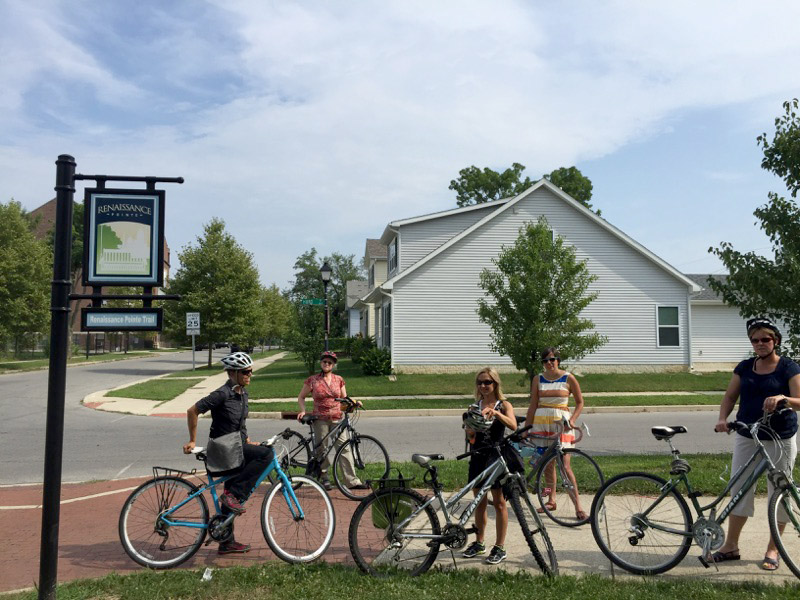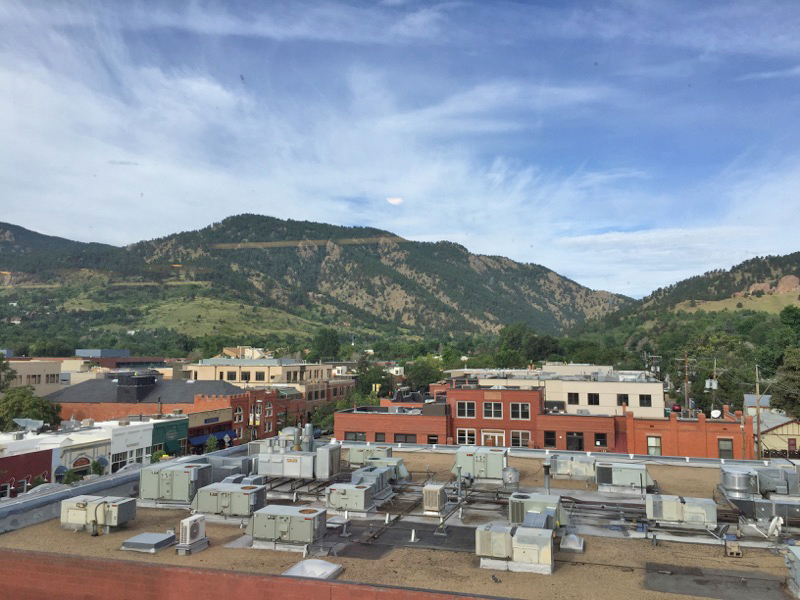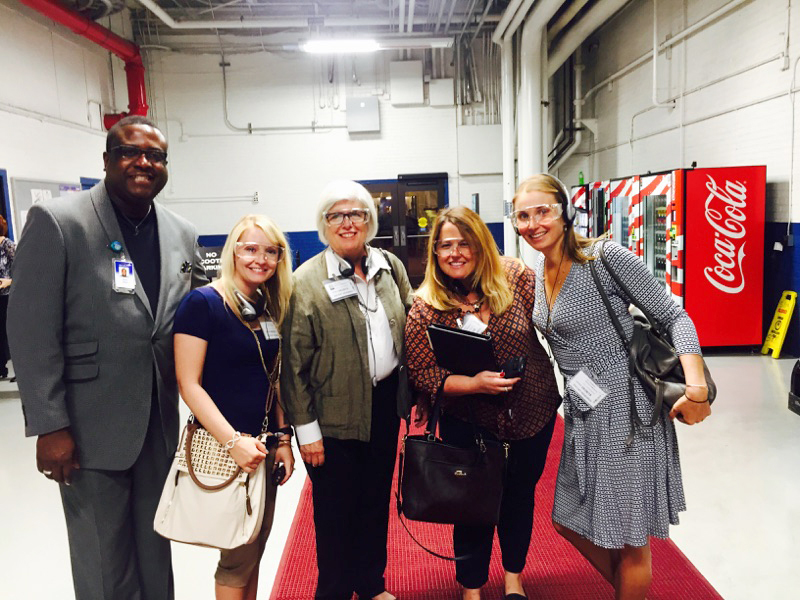
Tour highlights opportunities in Knight nonresident communities
Drumroll, please: I am halfway through visiting Knight’s 18 nonresident communities. These are places where we work with community foundations to make their cities even more successful. It’s hard to believe, but in just over two months, I have been to nine of our nonresident communities (with multiple stops in a few). I am having so much fun learning from local leaders and better understanding the communities the Knight brothers loved so much.
As a recap, I started off with Bradenton, Fla.; Gary, Ind.; Lexington, Ky.; and Long Beach, Calif. You can read about those trips here. Over the past five weeks I went to five more: Aberdeen, S.D.; Grand Forks, N.D.; Fort Wayne, Ind.; Boulder, Colo., and Wichita, Kan.
I want to thank the hardworking leaders from each community foundation who made these trips possible – Julie Johnson, a Knight Community Advisory Committee member who works with the South Dakota Community Foundation (Aberdeen); Kristi Mishler from Community Foundation of Grand Forks, East Grand Forks and Region; Christine Meek from Fort Wayne Community Foundation; Josie Heath from Greater Boulder Community Foundation; and Shelly Pritchard from Wichita Community Foundation.

Aberdeen, S.D.
Aberdeen is a mayor’s dream for a small town; its population has steadily grown over the past decade, and the number of jobs has grown at an even faster rate. In fact, the population can’t keep up with the number of jobs in the community. Attracting and retaining talented people, at a faster rate, is at the forefront of Mayor Mike Levson’s mind. With over 25,000 people and growing, Aberdeen is a true college town with Northern State University as a driver for the economy and innovation. And exciting things continue to come out of the university. It is a leader in agro-innovation. And a Confucius Institute just opened. Yes, that’s right, a Confucius Institute opened in Aberdeen. “Why,” you may ask, and “How does that relate to agriculture?” China is the top U.S. export customer of soybeans, which is a huge crop in South Dakota. Learning the culture and official language of China is now a priority for the savviest agro-business people. And, Northern State University leads the way with e-learning with a high-tech center connected to every public school across the state via fiber (there is an interesting backstory on using inmates to build out this fiber infrastructure). I look forward to a continued strong partnership with Northern State University – working with them and the city on talent retention and attraction.

Grand Forks, N.D.
“The brains behind the oil boom in North Dakota” was how someone described Grand Forks to me. With no oil near the city, intellectuals, from engineers to data scientists, live in and around the community. This has created a vibrant community – a community of doers and some very smart government officials. Building upon this leadership, Knight will be taking two of these leaders to Cophenhagen, Denmark, next week as part of a study tour with civic innovators from across the country. During my visit to Grand Forks, I saw firsthand how a more bikeable and walkeable community could really benefit the city, especially when it comes to better connecting the University of North Dakota to the downtown area. The university felt like an island, which doesn’t make sense when it makes up approximately a quarter of the city. I believe this should be a priority, and it looks like many people in the community agree. The downtown is charming, and there is potential to create more vibrancy by leveraging the university and ensuring that students remain in Grand Forks after graduation. With the potential for a tremendous amount of state money from oil, Grand Forks is in a unique position to transform its community.

Fort Wayne, Ind.
Bike paths galore! Fort Wayne has an impressive network of bike paths and trails winding throughout the city. There is still opportunity to do more: How can we better connect the underserved neighborhoods to the growing, vibrant downtown? That’s a question city officials are considering. Another priority is the beautiful river that runs through downtown. Gone are the days when the river was seen as a liability because of flooding; it’s now an asset, but there is more work to be done. There are massive plans for the revitalization of the riverfront and this could transform the community, helping with efforts to retain talented people and attract new ones to the community.

Boulder, Colo.
Boulder is gorgeous. The Rocky Mountains provide a stunning backdrop, and the city has made conservation a top priority with strict building codes. For example, buildings over three stories require special permission, and there is a maximum height of five stories. There is tension, though; Boulder is attracting top-notch talent due to a tech boom (Google is even building a massive campus), but there is not enough housing stock in the downtown area with the current restrictions to support this boom. We know that an increasing number of people want to live in the urban core, but in Boulder it’s either impossible to find a vacancy or pricing that’s affordable for the majority of the population. Density versus preservation, it’s a fine balance. The tech talent in Boulder is a tremendous asset for the city, but it is completely disconnected from the disadvantaged community. How can we better leverage this talent – use this asset to address some of Boulder’s challenges? The tech community is interested in helping and I believe Knight can be a partner in this effort to use talent to aid economic opportunity.

Wichita, Kan.
Wichita has some of the most talented aeronautical, industrial and manufacturing engineers in the country. However, with the pullout of Boeing over the past few years, Wichita has had to think more about how to diversify its economy, in particular leveraging its tech talent into entrepreneurial growth. There’s a real problem, though; the population growth is stagnant. Jeff Fluhr, president of the Wichita Downtown Development Corp., understands this problem and believes that the vibrancy and density of downtown can be part of the solution. With less than 1,800 individuals living in downtown Wichita in a city of almost 400,000 residents, there are simply not enough bodies in the downtown area. Furthermore, the public spaces have tremendous opportunity to become more lively. There are bright spots – with Douglas and Old Town really shining. Another area with potential: Wichita State University just announced it’s relocating seven departments to the downtown area. I look forward to building upon this momentum in downtown with the Knight donor-advised fund.
Stay tuned for more as I continue my travels to our nonresident communities in the coming weeks.
Lilly Weinberg is the program director for community foundations at Knight Foundation. Email her at [email protected] and follow her on Twitter @lillyweinberg.
Recent Content
-
Community Impactarticle ·
-
Community Impactarticle ·
-
Community Impactarticle ·


